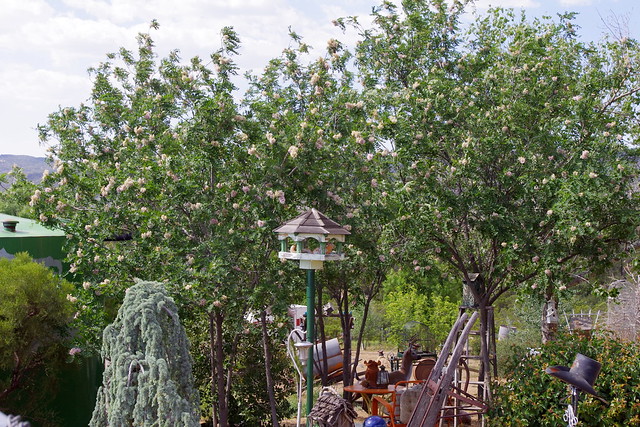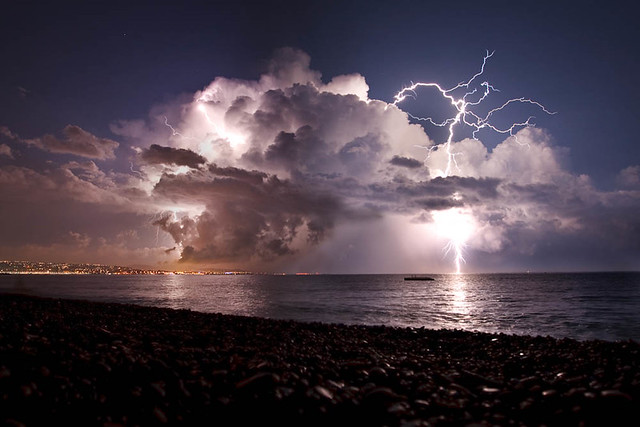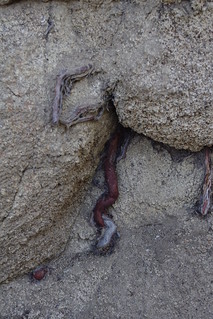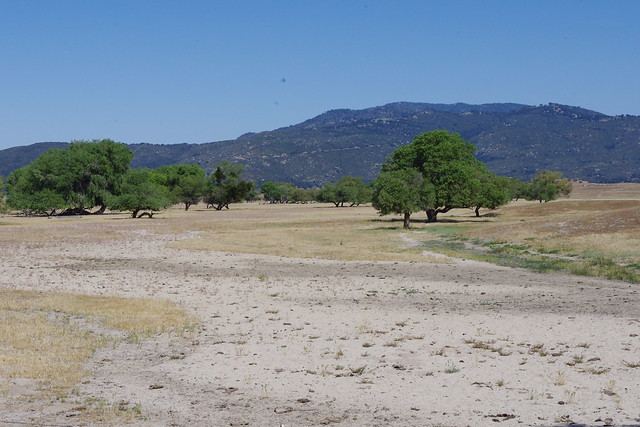Controlled burns are essential to promoting healthy pine growth and to prevent unwanted wildfires.
 |
Wikipedia
Grave of California Governor
Jose Joaquin de Arrillaga |
Well that's not only a Theory, it's also the prevailing conventional industrial science-based practice which has the power over and ability to trump the Science of discovery and wonder. In these modern times with so much research and information gathered on the actual way Nature really operates and maintains itself, you'd think that this newer understanding would replace the old outdated thinking and archaic land management practices based on the Historical past's ignorance. But it hasn't. Incredibly though, not all historical figures of the past were so ignorant. Some had the ability to observe and see first hand the fallacy of just such a practice and during a time when most of us would have called such a time in California as Nature in it's perfect pristine state. The man's name was, José Joaquín de Herrera, and he was once the Spanish Governor of California and only one to my knowledge who is buried here. He listened to complaints of many who were upset by the practice by both Spanish Settlers and the Natives who were burning the landscape for no doubt the commercial ventures of the time. No doubt with any lack of controls, or as Richard Minnich calls it, "Shepherding" of the fire, these fires most likely got out of control, though maybe not in the megafire way we experience them in our modern times. It's really hard to understand fully what this Spanish Governor saw, but clearly he saw the use of fire in both domesticated land management and out in the wild as reckless and childish as he put it.
“With attention to the widespread damage which results to the public from the burning of the fields, customary up to now among both Christian and Gentile Indians in this country, whose childishness has been unduly tolerated, and as a consequence of various complaints that I have had of such abuse, I see myself required to have the foresight to prohibit for the future …. all kinds of burning, not only in the vicinity of the towns but even at the most remote distances.
Therefore I order and command all commandantes of the presidios in my charge to do their duty and watch with the greatest earnestness to take whatever measures they may consider requisite and necessary to uproot this very harmful practice of setting fire to pasture .: I order that this decision of mine be published by proclamation in the presidios as well as the missions and towns of this province which is in my charge …. with the full understanding that whatever lack of observance may be noticed in this matter [which is] of such great interest will be worthy of the most severe punishment.”
May 31, 1793 - Jose Joaquin de Arrillaga
( Source )
The above source has some fascinating reading and observations from those early exploring pioneers who wrote about life in the past. Though in some places, it's really hard to interpret everything they observed and their take on the actual observation. Wonder what a person in modern times would think if transported back in time to that era and unshackled by the ignorance of those times[not to mention the biased assumptions of these times], and what questions do you suppose he/she would ask the Natives ?What would be the actual TRUTH of what actually happened and why back then ? Hmmmm!
What triggered my thoughts again on this subject was a post by the Chaparral Institute on Natural Fire return interval (meaning normal effect prior to Human influence) in which it was mentioned about interval time frame of fire effects as being between 30 to 130 years. He referred to the available study data in which oldest Manzanita found have averaged 130+ years. Incredibly though, I have found Manzanitas which appeared 100+ year old growth on numerous hiking and other exploration outings which had died, but without fire. [logically it's easy to tell if fire was at fault] Actually I've found not one, but several, one of which were on my property and died for no visible reasons in what appeared to be healthy pristine surroundings in wild settings. Rick Halsey calls such long held beliefs about reasons for Fire Management in which Prescribed or Control Burns are based on "conventional wisdom". There others like Jon Keeley who have also bucked a lot of conventional wisdom when it comes to outdated understanding still found in many modern day textbooks which influence policy in land management practices.
 |
| Image - Springer - "Obligate Seeders" |
But I've spent a lifetime bucking the conventional wisdom of this world's leadership, especially where it is glaringly wrong. I admit, I do question things quite a bit, but only because many times I have observed things behaving contrary to the supposed wisdom Conventional Authority[who as a general rule, resents having such authority questioned] when I've spent hours in the field over a period of 30+ years. For example, take the image from 'Springer Images' on the right. It is an example of plants said to ONLY germinate as a result of Fire and these plants are called "Obligate Seeders". Upper image: (left) serotinous cone of Pinus halepensis; (right) Pinus halepensis seedling. Lower image: Cistus creticus seedlings massively appearing on the burned ground. Yes, and as the story goes when the justification of Prescribed Burns is promoted, many plants cannot survive and/or propagate without fire and because there has been historical fire suppression, these ecosystems are in danger of going extinct otherwise. This has also been said about Tecate Cypress in a research papers and other Cypress are also "Obligate Seeders"
[PDF] A framework for assessing adaptation strategies for plants ...
"Tecate Cypress (Cupressus forbesii) Threatened by altered fire regime ▪ Obligate seeder – time for seed bank"
"Longer average fire return intervals better than shorter Fire Return Intervals, with 60 – 80 year average fire return intervals being optimal"
Again with Tecate Cypress, as I've written about before [see link above] and given directions where to view Tecate Cypress seedling Germination in old growth Chaparral/Tecate Cypress settings on Guatay Mountain between Pine Valley and Descanso CA right on Old U.S. Route Hwy 80. Then there was always my easiest example where I used to collect Tecate Cypress cone at Wildcat Spring on Boulder Creek Road below the western face of Cuyamaca Peak.
 |
| Image - San Diego Trails |
Tecate Cypress seedlings were always common every year when I came to collect cones off those large trees. They were not only under the canopy of the Mother Cypress Trees, but pioneering out into the Chaparral as well. Sadly, I'm afraid the 2003 Cedar Fire put an abrupt halt to all of that. I'd be curious if any reader would go there and report back to us with any photos. You can identify the spot which has a rock build square shaped reservoir for storage. Fire just is not necessary in many cases. But the strategy of explosive seed germination are necessary 'IF' a fire does plow through an area eliminating entire woodlands, but certainly not a requirement as the conventional wisdom would have you all believe. Another study [and there are countless others like it], which I reference at the bottom of this post because it deals with research on the age of Manzanitas, also refers to Manzanitas as one of these "Obligate Seeders", which by the definition given by this paper means this:
"These species have been well-studied in CA, and their seeds have been found to require fire for germination – this germination type is called ‘obligate seeder’. In CA and in other Mediterranean climates, shrubs with obligate seeder germination are generally unable to successfully recruit in the absence of fire." (uuuun-believable)
( *see link below @ bottom of this post)
Here is something interesting about my experience with Big Berry Manzanita. I had many on my former Anza California property. On the south side of my house I had 5 Manzanita seedlings which all sprouted during or about the same time period of the year 1986 & year after 1987. They were all down slope of two very large old growth Manzanitas which were along side the dirt road Table Mountain Trail. These five or six seedlings didn't require any fire whatsoever. In fact they all germinated in between some other shrubs what are commonly viewed as competitor chaparral, Chamise or Greasewood and in some of the most impossible soil you would never want to garden in. When I visited my old place this past year, three of the Manzanita shrubs were missing becayse the new owner bulldozed a pad and placed a small singlewide mobile home in it's place, but the rest were still there. This area also always had multiple Coyote scat loaded with seeds as there was always a small narrow game trail running through this location. And that is where I am glad I took these next photos on the South Fork San Jacinto River Canyon trail in early May 2013.
 |
| image - Mine |
Somehow I knew this would come in handy. This Coyote scat (droppings) are representative of what is part of a predators diet, though most folks would never associate Manzanita berries as part of a coyote's diet. This is a common sight on hiking trails. At different times of year you may also find Holly Leaf Cherry seeds in Coyote scat. In any case, the stomach acid effects can have the similar chemical trigger that may result in prepping the seed for germination. But this proves that fire isn't always necessary as advertised by so-called experts who may have a vested interest in such mythology with great commercial potential.
 |
| Photo: Mine |
This young Manzanita was emerging from a Chamise or Greasewood as the Prescribe Burn proponents love to call it. This plant also was along the South Fork San Jacinto River Canyon Trail and about ten yards further up the trail from the Coyote scat. Now I can't say for sure that this small shrub resulted from the Coyote scat, perhaps it could have been even microbial breakdown of the hard seed shell which allowed germination. In any event, what I do know is that it wasn't the result fire as there was no recent evidence of such anywhere.
For those local to the Anza/Aguanga area and interested in seeing for themselves, as opposed to taking my word for it, here is an easier drive to take and you may not even have to get out of your Car. Between Bautista Road and all the way west to the very foothills of Cahuilla Mountain, there are whole acreage patches of pure Manzanita chaparral stands where this fire prescription hasn't been necessary. To make things specific and easy, take Cary Road north from Highway 371 towards the area called Tripp Flatts. In fact I believe somewhere in twists and turns, Cary Rd becomes Tripp Flats Road. At a certain point you will come to a Y in the road where pavement continues to the left, but straight on to the right becomes Woodview Rd which loops around and eventually comes back to Tripp Flats Rd by means of Saddleback Road. There are other loops, but that is a main one. Keep in mind that traditionally this road has been a rough one with rocks, wash board and ruts everywhere depending on recent rains. But that's rural life in Anza. What you will notice in many of the cuts the road takes through hills is that the sloping berms created by the road cuts will have numerous small Manzanitas of varying ages and Fire was NOT a reason they germinated. Anyway, here is a map link to make it easier to find. (Map Loop link) . Even off Baustista Rd, you'll find many roads heading west towards other land development which will offer similar observations. The "Obligate Seed" anomaly may simply be viewed as a document or file of a genetic programming to be used where immediate recovery on a grander scale is necessary to counteract the effects of a catastrophic event. If these fire events however happen to frequently, even this file or program is made worthless.
The recent events of the major wildfire tragedies have brought out the Ideologue boys in pimping Control or Prescribed Burn philosophies which are nothing more than Government looking like they are doing something good in the eyes of their citizens, despite the evidence that Nature doesn't work this way. Hence, justification for prescribed burns are said to be necessary because the Native Americans did it. Or the flawed argument that chaparral needs a regular healthy burn because it can't germinate without it. Both these flawed reasonings are parroted by countless ignorant citizens on all manner of discussion boards because they are conditioned to letting the Authorities do their Natural World thinking and research for them as opposed to actually getting off backsides out and out into the field and finding out for themselves. Such strategy by Authorities is nothing new. When Christendom ruled europe for Centuries with an iron fist this was done very effectively for Centuries by indoctrinating parishioners not to question their Authority. So it should not come as a surprise when today's Secular Authorities employ the same information control tactic. You've heard the expression, "If it's not broken why fix it" ? Rulership never changes, just the change of garb. Especially with this latest "Mountain fire" in the San Jacinto Mountains above Palm Springs California have many well known ignorant statements been made by people promoting themselves as the infallible authority. Two main ones come to mind. Recent comments by supposed Fire Ecologist Richard Minnich who says old growth vegetation is a bad thing and Politician Harry Reed who had this to say below:
"Reid said the government should be spending “a lot more” on fire prevention, echoing elected officials who say the Forest Service should move more aggressively to remove brush and undergrowth that turn small fires into huge ones."
(Source)
|
|
Image - Mine
Cuyamaca Cypress & it's
Chamise Nurse Plant
|
The sad thing is, the average person will parrot such men or woman in charge of fire policy. Chaparral and old growth Forests are not the problem. Human error however is the issue. The challenge for these Politicians and others in authority, is how do you control human behavior ? Answer- you can't. Aside from creating some newer extremist type of Laws hindering more freedom and strict enforcement of penalties by means of a Scientific Socialism type of Gestapo police state action, quite simply you still won't control people's actions, whether deliberate or the flaws of their own stupid decision making. Education certainly would be beneficial, but let's be honest here, this freedom mentality is a tough nut to crack and rein in. Teaching people that Freedom has limits is not what the majority wants to hear, even though they know this to be true. You all know what I'm talking about, just flick on the Nightly News. For some people like the Minnichs, Bonnicksens or the Reids of our world, they will always cite that often misused and abused term "peer-review". Ever notice that some intellectuals [at least the ones that promote themselves as such] seem to be incapable of believing in something unless it's been "peer-reviewed". It's like a truth of a matter cannot be correctly established unless it has been 'peer-reviewed'. But is there really any guarantee that 'peer-review' translates as 'Truth' ? While peer-review is a wonderful concept and should be used for the purpose intended, it is no guarantee of truth of a matter. Some people use it in discussions and debates as a kind of 'magic pixie dust' for settling an argument on Public Forums.The bottom line here is, you should always test things out for yourself. If you believe you cannot trust something unless it has been peer-reviewed, then you seriously need deprogramming. The obsession with "peer-review" often champions another term called "political correctness, when what is really needed is "common sense." If "peer-review" was actually the silver bullet for success,
"The gullible believe anything they’re told; the prudent sift and weigh every word. Foolish dreamers live in a world of illusion; wise realists plant their feet on the ground."
Proverbs 14:15-16
Don't be gullible and taken in by the Expert's bluff. When you hear the News Reports and the Politicking going on, take everything with a grain of Salt. If you are a private citizen property owner, don't wait and count on the leadership to say and do the right thing before you act on your own land. Historical precedents tell us it'll be a long ride before that happens and the Earth and Natural World under the present system doesn't have the luxury of time.
Interesting Reading References:
http://people.oregonstate.edu/~muirp/FuelsReductionSWOregon/ResearchReports/Research_ChaparralEcology/Research_ChaparralEcologynew.html








.jpg)






















